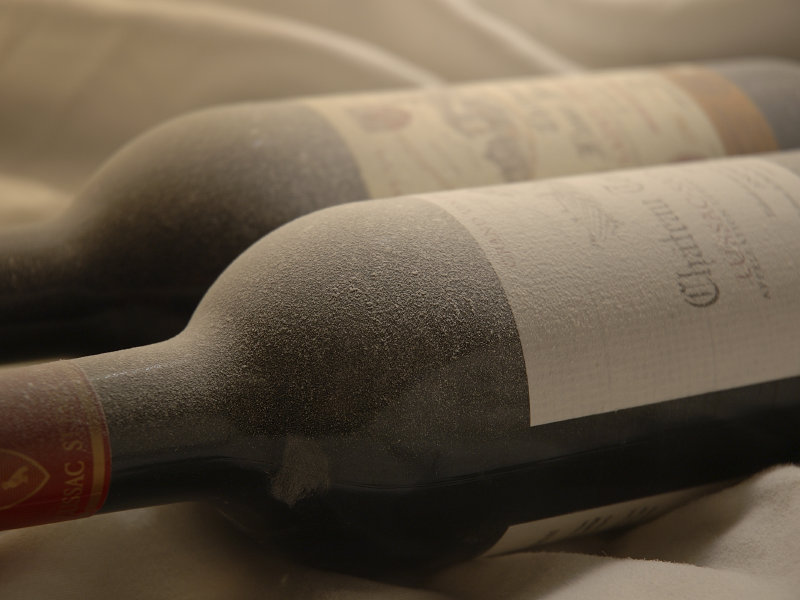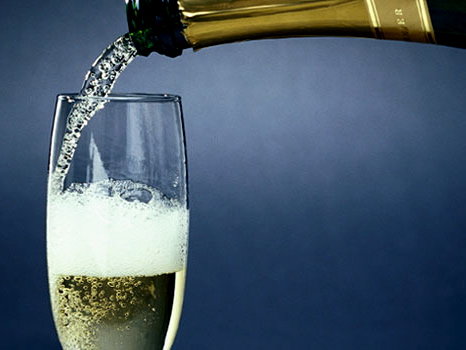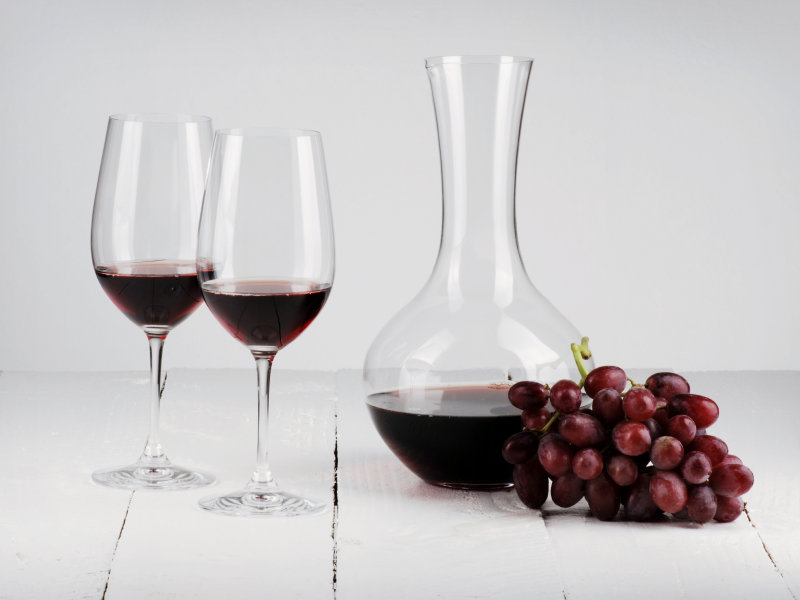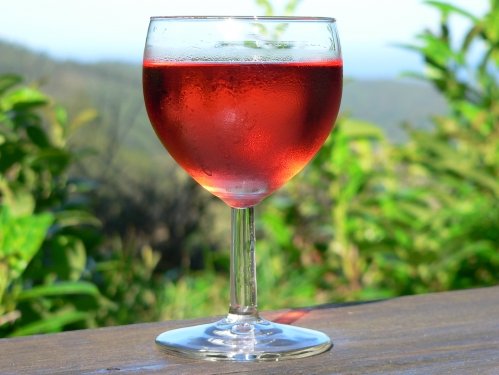The question pops up all the time in wine seminars and classes, between friends and colleagues. Someone mentions a dusty bottle of wine in the basement they saved from their wedding night. Or perhaps someone else bought a bottle to commemorate the birth of their child who turns 21 next week and wants to know if they should even bother opening it.
Are they still good?
As with all things wine, there is no hard and fast rule that can be applied to the question of ageability. But this column is going to hopefully clear a few things up for you, and dispel some misconceptions along the way.
First and foremost, no two grape varieties are equal. No two grow the same, or age the same in the bottle. Focusing on either side of the red vs. white categories for the discussion, still renders the glaring differences between grapes like Sauvignon Blanc and Viognier, or Pinot Noir and Syrah. Even if a particular varietal is chosen as the "test subject," the country of origin, vintner and vintage change the playing field altogether.
Pinot Noir for example, grows very different in the Cote de Nuits in Burgundy than it does in Sonoma County. The soil structure, root stock, growing season, vinification and more all are different and impact the way each wine will age.
If this wasn't a confusing enough start, take into account personal taste and the country in which the wine is consumed, and you will find the answer to how long wine should age drastically different. New World countries (the entire western hemisphere, Australia and New Zealand) tend to drink their quality wine considerably younger than their Old World counterparts (France, Italy, Germany, Spain and everyone else who taught all the New World-ers how to make wine).
But how do we know when a wine will taste its best?
Since there hasn't even been an attempt to answer the question yet, let's get to it.
Whites don't last as long as reds -- they almost always have next-to-no tannins, and the balance of tannin and acid is what allows wine to age. There are two types of tannins: grape tannins and tannins found in the skins and seeds. Since the majority of whites see little-to-no contact with the skins, they seldom contain skin tannins. Grape tannins are wonderful for body and texture, but are far more dainty and fair and don't help the aging.
Whites are also typically oak-aged far less than quality reds. If they see any serious amount of time in the barrel, they will more often than not be big whites like Chardonnay, capable of hanging on for a few years.
Oak aging starts to get a bit more technical, but suffice to say that the process allows the chemical makeup of the wine, particularly wines with complicated tannin structure, to settle in for the long haul (anthocyanins and acetobaters begin to work their magic -- that's all the big, geeky vocabulary you get for today).
The other major thing prohibiting whites from aging is that the air in the bottle can unbind the chemical compound acetaldehyde also know as ethanal, causing oxidation (OK, so one more geeky A-word had to make an appearance). Because they don't have the tannins and backbone that reds do, sulfur dioxide is often added to help keep the acetaldehyde under wraps. But whites are still more fragile and unstable, and consequently age much quicker. A white that is too old will begin to change color, gradually turning amber, then brown, and develop a pungent warm apple and nutty character.
Some whites are meant to be consumed in the first year, others will age for 15 or more years. It all depends of the varietal, region and vintage.
For red wines, the basics from the white discussion above apply (skin tannins, oak aging, etc.) Since the primary tannins come from the skins, the thickness of the skins impacts the level and concentration of tannins. Certain grapes such as Pinot Noir have thin, delicate skins. Consequently, the density of tannins and chemical makeup is much lighter. This means that Pinot's won't age nearly as long as bigger, more dense red wines. Cabernet, Merlot, Nebbiolo, Sangiovese and others, all have the capacity for serious age because of the concentration of tannins.
However, a thick-skinned, oak-aged cab doesn't necessarily mean longevity. The key to long life comes from the soil and the vintage. Normal agricultural thought would dictate that rich, fertile soil would be the ideal playground for grapes to grow. The contrary is the case -- the harder a vine has to work to survive, the higher the quality. When a vine has to struggle to get the required minerals and nutrients to the grapes, it produces fewer actual grapes, but the grapes that do grow are far more concentrated, complex and full of flavor.
Vintage is even more essential. Sunshine is wonderful, and essential for grapes to grow, but a long, steady and balanced growing season is what creates an age-worthy vintage. From bud break to harvest, the right amount of rain, warm days and cool nights, all in the right order, are what determine a vintage that will allow a great wine to improve with age.
Add all these physical factors together and we still haven't talked about ideal storage conditions. Did the bottle sit perfectly still in a climate controlled environment at 55 degrees? How many times did the bottle change hands before you bought it, and what kind of treatment did it receive along the way? If a wine has been well cared for and stored in an ideal setting, the likelihood of drinkability is increased. If not, all bets are off.
But remember, there really aren't any quick and easy rules for determining when a wine will age and for how long. The biggest caveat is still to come -- personal preference.
Determining how good a wine is and how long it should sit depends entirely on whether you like your wine big / bold / young and fresh, or prefer a subtle / softer, more delicate wine. Yes, technically there is an optimal point at which quality wines reach their prime. But if you enjoy your 2005 Stag's Leap Winery Napa Cab so big that the inky rich blackberry, mouth-puckering tannin and monster body jump out of the glass and smack you across the face, have at it.
If, on the other hand, you prefer to quietly sip a 1985 Ducru-Beaucaillou St. Julian, Bordeaux and relish the delicate and cerebral leather and tobacco notes, complex red / black fruit tones and integrated and lengthy finish, cheers to you, too.
Regardless of how you prefer your wine, there are a few words of warning when trying to figure out just when to pop that next great bottle:
- If you drink your wine too young, you risk missing out on some of the depth and complexity that can only come with a little aging, instead getting blindsided by raw, underdeveloped power.
- If you drink your wine too old, it may loose most of what made it great in the first place and shrivel to a dusty, flat, tart hollow shell of what it once was.
- Quality is key. As simple as it sounds, the higher the quality (all things being equal for varietal, region and vintage) the more aging potential a wine possesses.
- Quality doesn't always mean more expensive. Typically, big, expensive wines are built to last. The price tends to rise as the wines age. But one is not always dependent on the other.
Because there are so many uncertainties and variables surrounding the ideal age for wine consumption, the best course of action is to consult a trusted retailer or sommelier. Or, if you have some gems that you have been sitting on and want to know when to drink them, send me an e-mail and I will let you know when to invite me over for dinner to drink it.
Otherwise, drink what you like when you like.
Just don't get your hopes up too high for that really old bottle in the basement. But you'll never really know until you pop the cork -- it may be quite an adventure.







